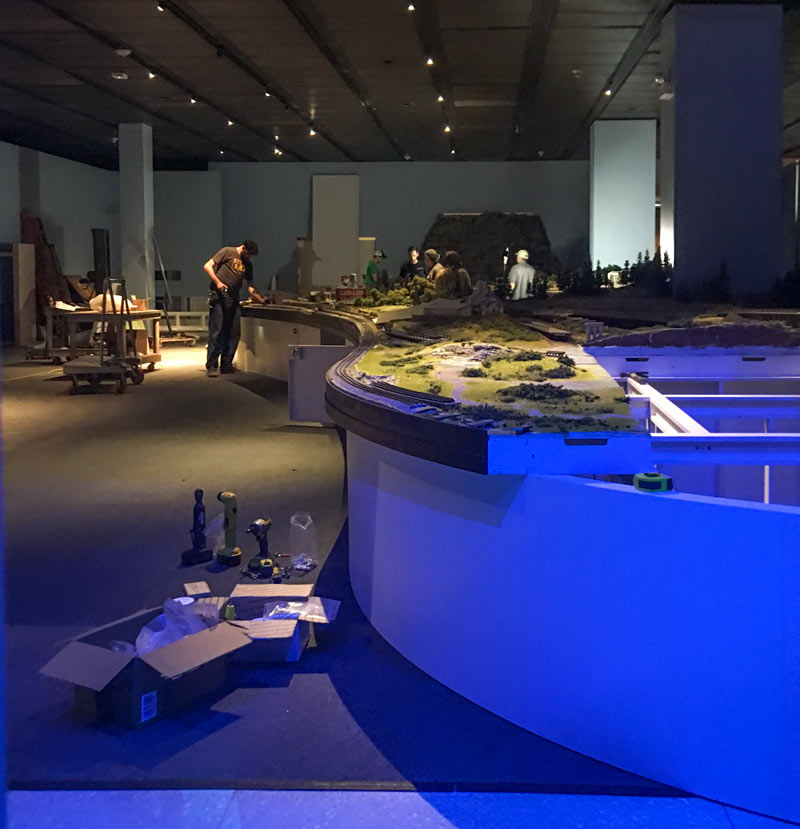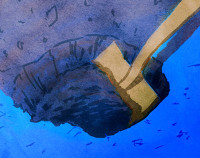
A through-the-curtains peek at at the reassembly of about 2,500 sq. ft. of miniaturized Texas landscape (made by T W Trainworx for the Houston Museum of Natural Science’s soon-to-open model train exhibit) comes from a reader who snuck a glance on Thursday. The exhibit, which should open some time after the 2nd week of installation wraps up, looks like it’ll include hand-carved models of some of Texas’s less flat geographies, including the Balcones Escarpment and Texas’s own pretty darn grand canyon, Palo Duro. The official details on opening and closing dates aren’t out yet, but a behind-the-scenes event description on the museum’s website notes that the exhibit will also show off some more familiar Gulf Coast features like “oil country salt domes, prairies and wetlands.” Natural stone landmarks, like Enchanted Rock, and unnatural stone monuments, like the state capitol, will also be part of the display.
Photo: Swamplot inbox


 “St. Augustine grass has a very shallow root system that barely reaches 2 inches into the soil. Beneath that root system is our typical thick clay gumbo soil that is very slow to drain moisture and more prone to let water run off into the storm sewer system. When you plant native grasses and plants, the roots reach down much deeper in the soil and fundamentally change the [bulk] composition of the soil. Instead of the thick gray clay gumbo soil, you get a much looser brown soil that
“St. Augustine grass has a very shallow root system that barely reaches 2 inches into the soil. Beneath that root system is our typical thick clay gumbo soil that is very slow to drain moisture and more prone to let water run off into the storm sewer system. When you plant native grasses and plants, the roots reach down much deeper in the soil and fundamentally change the [bulk] composition of the soil. Instead of the thick gray clay gumbo soil, you get a much looser brown soil that